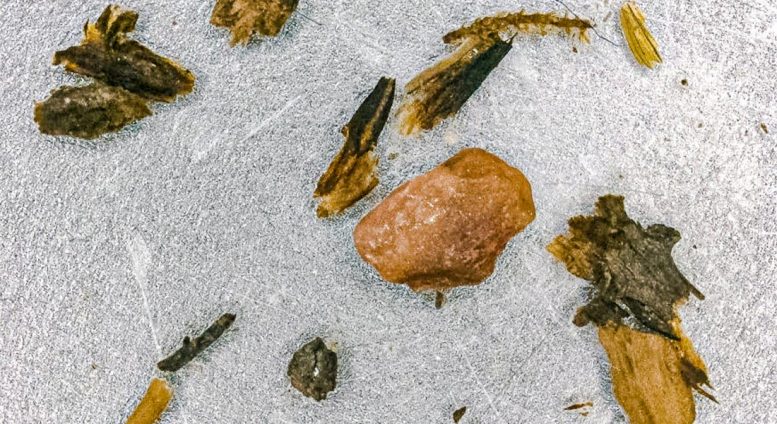Intact Plant Fossils Discovered Beneath Greenland’s Ice Sheet After Lucky Find of Ice Cores Drilled by U.S. Military in 1966
4 Years, 3 Weeks, 5 Days, 4 Hours, 11 Minutes ago

For the first time ever, researchers have found fossils under Greenland’s ice sheet that are so large and well preserved that they can be seen with the naked eye. The fossils reveal several million years of details about climate and plant life in Greenland according to the UCPH researcher behind the discovery.
Following a relocation of ice cores to the Copenhagen suburb of Rødovre in 2017, University of Copenhagen researchers found unopened boxes of ice cores dating back to 1966—the first ice cores drilled on Earth. Analyses of the long-forgotten ice have now been completed and are presented in a new study with groundbreaking results.
Within the cores, which come from deep within the ice sheet at Camp Century, Greenland, the UCPH researchers and their Belgian and American colleagues became the first ever to find these millions of years old macrofossils. The fossils are large enough to be seen without a microscope.
“We pinched ourselves over the treasure we’d found! Because within the cores, which for the most part resemble compressed gravel, we could identify entire twigs and leaves, perfectly preserved after millions of years. We had never found anything like this, nor had anyone else,” explains Professor Dorthe Dahl-Jensen of the University of Copenhagen’s Niels Bohr Institute, who adds:
“Thorough DNA analyses are typically required to identify which plants and animals are in ice. But here, we could see things immediately. The ice was drilled in an amazing location where there were obviously plants and branches before ice-covered Greenland.”
Ice cores found by pure luck
That the ice cores from Greenland’s Camp Century were recovered by UCPH researchers was pure good luck.
“We had recently begun moving our stock of ice cores from the Copenhagen suburbs of Ballerup to Rødovre. During the move, our ice core curator Jørgen Peter Steffensen found the boxes of Camp Century ice cores. He had a feeling there was gold locked in that ice, and he was right!” says Dorthe Dahl-Jensen.